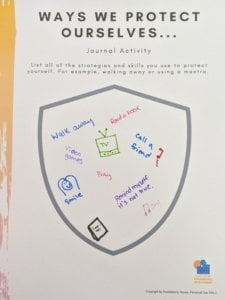September is Suicide Awareness Month.
It’s important to raise awareness that suicide is preventable. How? Suicide is a means to an end. An end of pain. If we treat the pain early enough, we can prevent many from losing their lives to be free of pain.
Recognize When Someone Needs Help.
The first step in preventing suicide – is recognizing the signs that someone needs help. We all have warning signs when we need to get help. These warning signs can look different between each person, so if you suspect, feel something is off, or notice any of changes in their behavior, talk to your teen. Schedule a therapy session. And talk with them about healthy coping strategies.
Here are some warning signs:
- Feeling down
- Stomach or headache that don’t get better
- Sudden changes in behavior
- Loss of enjoyment or motivation
- Over sleeping, not sleeping, nightmares
- Declining grades
- Feelings of panic
- Struggling to leave the house
- No longer wanting to do things they enjoy
- Not being able to sit still
- Keeping secrets
- Irritability
Prevention Steps
While not all suicides are related to how one views themselves, many youth who die by suicide, struggle with negative beliefs or perspectives about themselves. We can connect with them by using positive language about ourselves and others in everyday conversation. If we project positivity about body types, personality types, and other differences – these are unconscious habits, beliefs, and practices our children will pick up. Ultimately, applying these positive actions to themselves.
By encouraging youth to care for themselves with healthy coping strategies and self-care techniques, we are also teaching them to value themselves. We are teaching them preventative skills. And reducing the impact of trauma, life stressors, and other pains they experience.
Pain often makes us feel out of control, weak, vulnerable, and zaps hope. Reminding others of their strength and abilities helps to build a shield against pain.
Activity to build protection skills
When we view ourselves in a positive light, we create an armor for ourselves. One of my favorite activities to use with youth is to draw a picture of a shield (old fashion style) and have them draw or list ways they protect themselves. This might be walking away, saying positive things to themselves, using assertive communication, or even asking for help.

For clients with a history of fighting, aggression, or survival behaviors – have them write those behaviors in a separate color from healthy coping strategies.
This activity can also help a youth look at the progress made since the start of therapy.
Download this worksheet for free!
IF you haven’t heard it today…
I am so glad you are in this world.
You are enough.
You are not fighting alone.
Your life matters.
Your pain won’t last forever.
Everyone struggles sometimes.
It’s okay to ask for help.
We’re Here for You
Huckleberry House Crisis Line 24/7/365 @ 614-294-5553
National Suicide Prevention Lifeline 1-800-273-8255
Join Us –
Click below for more information and to reserve your ticket
Lethality Assessments with Adolescents – Training Event – Guest Speaker, Tishia Gunton
Follow the Professional Development Team on Pinterest, Etsy, and Facebook.


